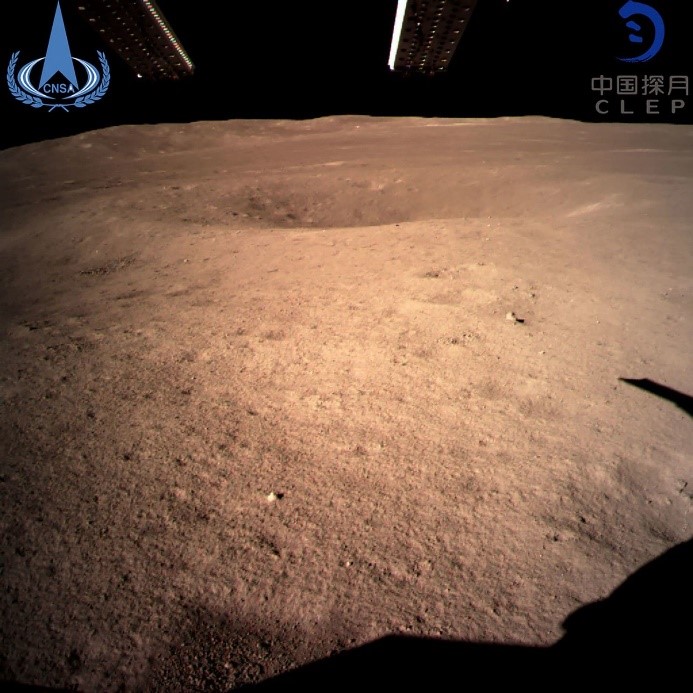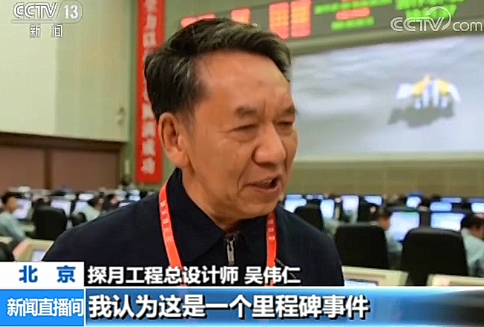Earlier this month on Jan 3rd, China made history with the first successful landing on the far side of the moon. And WU Weiren, a USTC alumnus, is the chief designer of the Chinese Lunar Exploration Project (CLEP).
The probe, named Chang’e 4, was landed at 10:26 a.m. Beijing time in Von Karman crater within the moon’s South Pole-Aitken basin. Shortly after landing, a rover on the landing craft dispatched the first photo of the moon’s surface from its far side back to Earth via a satellite communication relay.

The far side of the moon (photographed by the Chang’e-4 probe, provided by CNSA)
Do you wonder why it’s called the “far side”? There is an interesting fact: we always see one side of the moon. That’s true – due to the gravitational effect, the moon and the earth are tidally locked, which means that it takes the same amount of time for the moon to rotate once about its axis as it takes to make one orbit around the earth.

One side always faces the earth (Image from Wikipedia)
Moreover, the far side is not only invisible in light, but also in direct signal communication from earth. Fortunately, the quandary has been solved by a China’s relay satellite. And now, for the first time worldwidely, China’s Chang’e 4 probe has successfully landed on the invisible side.
“The far side of the moon is a rare and quiet place that is free from the interference of radio signals from Earth,” YU Guobin, spokesman of the mission, said. “This probe can fill the gap of low-frequency observation in radio astronomy, and will provide important information for studying about the origin of stars and nebula evolution.”
China Central Television (CCTV) made an exclusive interview with WU Weiren on Jan. 3rd. “From the perspective of lunar landing, especially in respect to the far side landing, I think (the project) is very satisfactory,” he said. “The far side we can neither reach nor see, but despite of this quandary, via a relay (satellites) we managed a safe landing with high accuracy, so I think it’s very successful.”
“A small step for the rover, but one giant leap for the Chinese nation,” WU concluded.

WU Weiren being interviewed (Image from CCTV)
Brief biography of WU Weiren:
1953, born in Sichuan, China
1978, graduated from University of Science and Technology of China (USTC), received a degree in remote sensing and control, then entered the Ministry of aerospace industry of China (now China National Space Administration, CNSA)
2008 – present, elected as the chief designer of the Chinese Lunar Exploration Project.
2015, elected to the Chinese Academy of Engineering
(Written by QIANG Jiaxuan, edited by SHI Xiao, USTC News center)